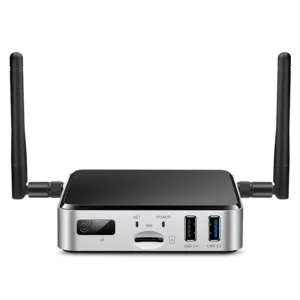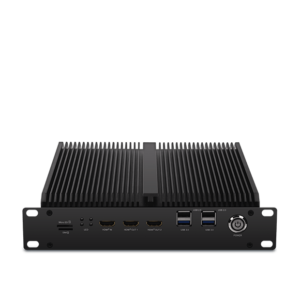AI on Edge Units vs. Cloud AI: Professionals and Cons
AI on Edge Units vs. Cloud AI: Professionals and Cons
Blog Article
AI on Edge Products vs. Cloud AI: Pros and Cons
Real-World Purposes of AI on Edge Products
Synthetic intelligence (AI) is no longer limited to the kingdom of large, centralized data centers. Thanks to developments in technology, edge products today enjoy an integral position in deploying AI straight where data is generated. But what does AI on side units mean, and why is it creating such a excitement? Here, we'll investigate how edge ai solutions runs in actuality through edge devices and uncover their wide range of realistic applications.

What is AI on Side Devices?
AI on edge devices refers to deploying synthetic intelligence calculations entirely on devices like smartphones, cameras, drones, or IoT sensors. They do not need use of centralized machines for processing information; instead, they perform analysis and conclusions locally, creating the procedure faster, better, and often more secure.
The "edge" here simply refers to processing done near to or at the foundation of data technology, in place of relying on the cloud. This change is driven by the requirements for real-time knowledge handling and the necessity to reduce latency, improve privacy, and reduce bandwidth usage.
Critical Real-World Programs of Edge AI
1. Clever Detective
AI-powered cameras designed with face recognition, action recognition, and anomaly recognition are transforming detective systems. Edge units in this domain can analyze movie streams in real-time to identify suspicious activities, eliminate false alarms, and improve community safety. For example, AI methods may discover strange movements and attentive authorities straight away without the need to deliver movie information to a central machine for analysis.
2. Healthcare Checking
Wearable products and lightweight medical gear are leveraging ai m.2 module for managing health information more efficiently. Edge-based AI in devices like wellness trackers and smartwatches screens users' vitals, such as heartrate, oxygen degrees, or blood pressure, in real-time. These systems analyze data domestically and give instantaneous feedback, paving the way in which for quicker treatment during emergencies.
Beyond wearables, advanced medical imaging devices built with on-device AI can find signs of diseases like cancer, enabling earlier in the day diagnoses even yet in rural places without web connectivity.
3. Autonomous Cars
Self-driving vehicles are among the absolute most well-known samples of edge AI in action. With devices, cameras, and LiDAR techniques providing as knowledge places, AI computations take place onboard these cars to produce split-second decisions. From finding pedestrians and obstacles to moving city roads, edge AI guarantees that the vehicle operates reliably and efficiently. The real-time handling capability of side units eliminates the reliance on high-latency cloud programs, ensuring safety in life-critical scenarios.
4. Retail Analytics
Edge products in retail surroundings are helping firms analyze consumer behavior. Wise shelves and AI-equipped cameras may find client choices, check stock, and also modify in-store experiences in actual time. The information made from these units helps shops produce knowledgeable conclusions, increase customer care, and optimize catalog management.

5. Industrial IoT
Factories and industrial flowers are adopting edge AI to revolutionize their monitoring and automation processes. AI-powered detectors on equipment identify potential faults long before they cause expensive failures. Predictive preservation pushed by edge AI decreases downtime, improves productivity, and guarantees protection on the manufacturing floor.
6. Individualized Experiences in Client Devices
Your smartphone is an excellent example of how side AI personalizes user experiences. Features such as for instance voice assistants, adaptive camera controls, and on-device language interpretation use real-time AI to answer individual needs without sending sensitive data to outside servers. That fosters equally convenience and solitude for the finish user.
The Growing Influence of Edge AI
The usage of AI on edge products continues to rise, driven by industries' raising need for low-latency, real-time computing, and better data privacy. Their purposes are reshaping industries ranging from healthcare and automotive to community security and retail. By putting AI's energy nearer to wherever information is produced, edge units aren't only increasing efficiency but also demonstrating the countless possible of creativity in today's linked world. Report this page